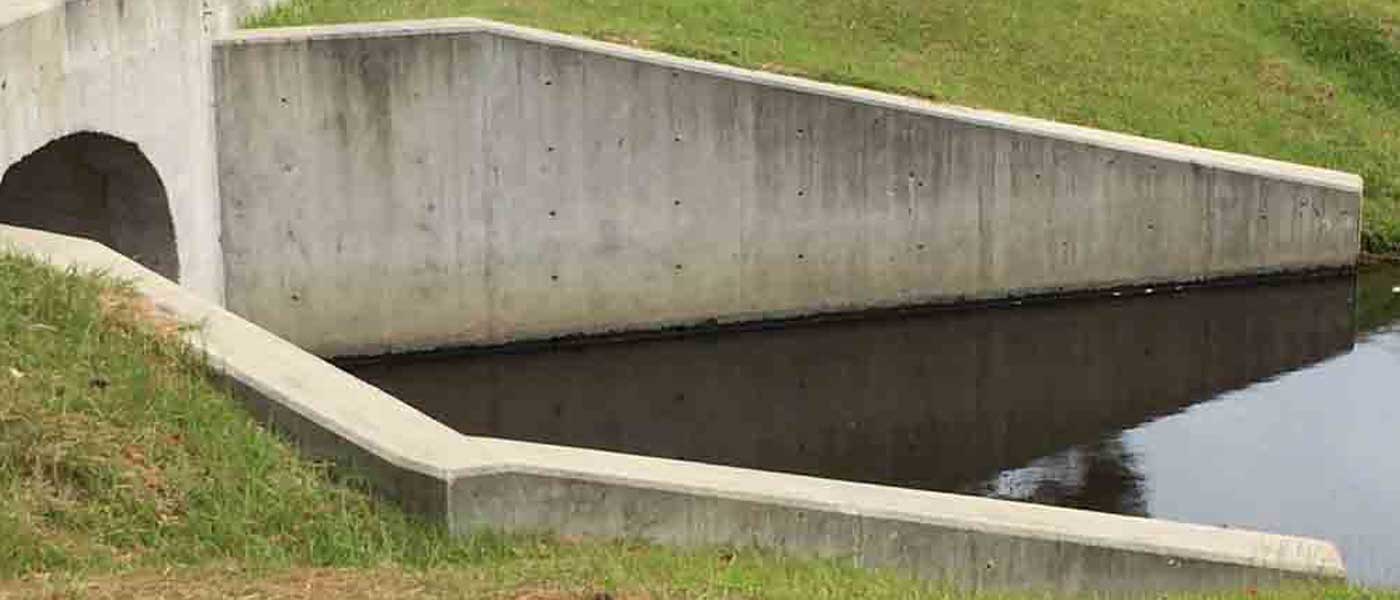
Retention Pond vs Detention Pond
Posted on 3/15/19 by Llewellyn's Construction
Land development in Southeast Texas has exploded in recent years, turning areas that were considered rural, into an ever growing beast named urban sprawl. The development of shopping centers, neighborhoods, hospitals and toll roads have moved all the conveniences of city life to the country. Most of this once undeveloped land, use to be an important solution to flood control. Excess rain water would be absorbed into the ground and/or flow into natural channels such as dry creek beds, streams, creeks, etc., allowing the overflow to dispense into larger waterways, eventually winding up in the ocean. With the rapid development of this raw land, comes roads, sidewalks and parking lots…all made from concrete or similar non-absorbing materials. With no where else to go, all this excess rainwater pools up and causes flooding. This concrete jungle is actually a huge cement pond with no boarders.
Fortunately, there are solutions. New processes for flood and drainage management are now part of every new construction design. The most common remedy is to incorporate a Retention Pond and/or Detention Pond. Architects, Engineers and professional contractors work together to ensure optimal performance.
Retention Ponds
Retention ponds, sometimes referred to as wet ponds, are designed to redirect stormwater surges using a gravity fed simple sloped design. A system of pipes with drains are strategically installed, to catch the excess water puddling on the surface areas and diverts it to a designated location where the water is retained indefinitely.
Detention Ponds
Detention ponds, also known as dry ponds, are designed to collect water in the same manner as retention ponds, but the water is stored only temporarily. When the surrounding areas are stabilized, the collected stormwater is slowly released through an outlet located at the bottom of the pond. This process is continued until the pond is dry. Detention ponds usually are surrounded by vegetation to enhance their appearance and hide the ruggedness associated with an empty pond.
IS IT REALLY RETENTION POND VS DETENTION POND?
Not at all. There are several factors involved in the design process which will determine the type of pond that is best suited. Consideration is given to such things as lot size and location, city ordinances, neighboring structures and the potential of aesthetic enhance to the total project. If your preference is to have a pond that can be stocked with fish or is the focal point of a jogging trail, then a retention pond will be incorporated into the drawings. If flooding is a constant concern due to low lying areas, a detention pond is your best bet. These ponds are able to collect more water because they are emptied in between storms.
CAN RETENTION PONDS AND DETENTION PONDS WORK TOGETHER?
Yes, if the designated area is large enough to incorporate two plus ponds. It’s also helpful if the topography has different elevations. In fact, many larger developments such has neighborhoods and large commercial campuses often incorporate both types of ponds to enhance their parks and open spaces. These ponds can be combined using waterfalls and streams as the connectors.
NOW YOU KNOW WHAT KIND OF POND YOU WANT, WHAT ARE YOUR NEXT STEPS?
First, get with an Architect and possibly an Engineer. Together, you will design the best pond for your project. Once your drawings have been approved, your next step is to hire a professional contractor that can take your drawings and turn them into reality. Llewellyn’s Construction Inc., and their team of “Pond Experts”, are ready to take on any challenge. With over 20 years of experience, they will produce a finished pond that exceeds all expectations. Give them a call for your free consultation.